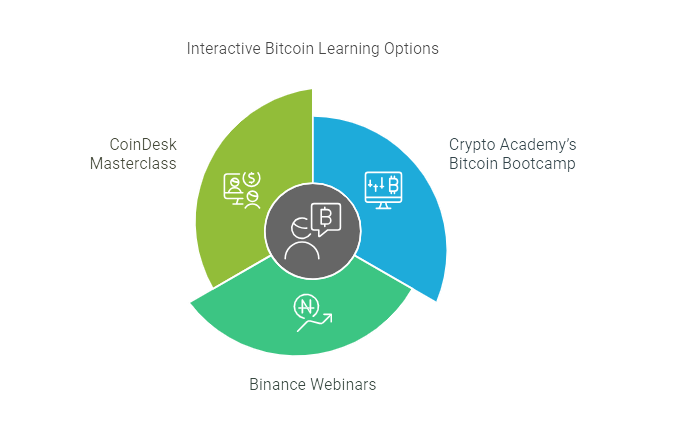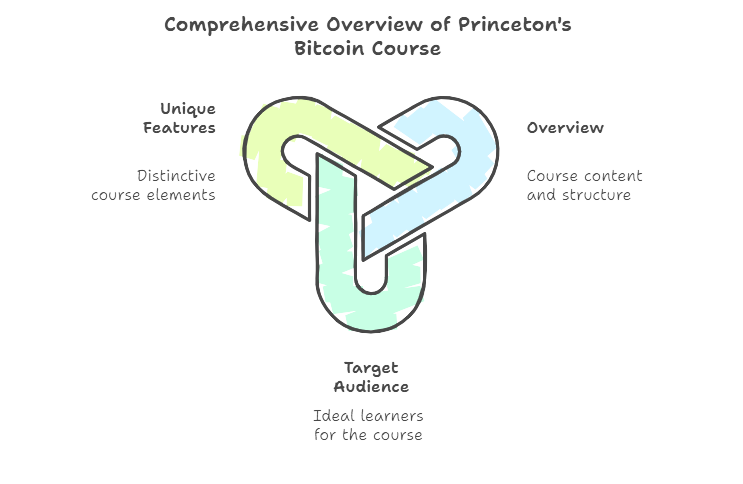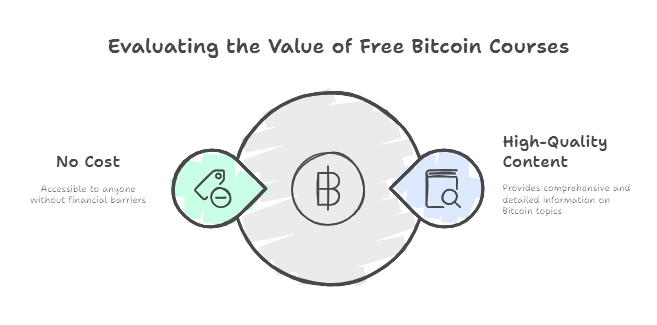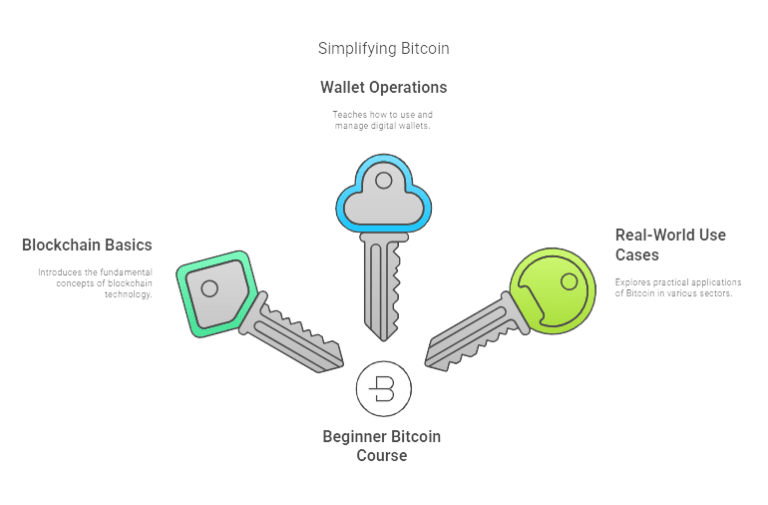Introduction: Why Bitcoin Skills Matter More Than Ever in 2025
Bitcoin is no longer speculative tech — it’s an economic force that’s reshaping global finance. In 2025, it’s being adopted by institutions, integrated into retirement accounts, and recognized as a hedge against inflation. As the infrastructure grows around it, understanding Bitcoin isn’t optional — it’s a competitive advantage.
But most people approach Bitcoin the wrong way. They chase headlines, skip fundamentals, or treat it like a get-rich-quick asset. That approach leads to confusion, poor decisions, and missed opportunities.
The right starting point is education — not hype. Learning Bitcoin means understanding its core principles: how it works, why it was created, and how to interact with it securely. That includes setting up a wallet, managing your private keys, understanding the blockchain, and using Bitcoin in a way that gives you full control.
This guide breaks down exactly what to learn, where to learn it, and how to build practical Bitcoin skills from the ground up.
Key Takeaways
- Bitcoin is not just a digital asset — it’s a new financial foundation. Understanding it properly requires more than headlines or hype.
- Learning Bitcoin starts with mastering the fundamentals: what it is, how it works, how to store it, and how to use it securely.
- The best Bitcoin courses teach more than theory. They walk you through wallets, transactions, security practices, and the deeper purpose behind Bitcoin’s design.
- Free and paid options both offer value — if you know what to look for. Some of the most respected courses are free, but not all free courses are created equal.
- You can become confident with Bitcoin in 30 days or less, starting with the right education and hands-on practice.

What You Must Understand Before Choosing a Bitcoin Course
Before you jump into any course, you need a clear understanding of what you’re actually trying to learn — and why it matters.
Most courses lump Bitcoin into the broad category of “crypto,” but Bitcoin stands apart. It’s not a tech startup or a fast-moving trading asset. It’s a protocol built to solve one problem: how to store and transfer value without trusting a third party.
That changes everything.
Bitcoin is not a shortcut to wealth — it’s a gateway to understanding how modern money works, how to secure your financial sovereignty, and how to navigate an increasingly digital financial system with confidence.
Here are the core distinctions to understand before choosing any course:
Bitcoin ≠ Crypto
Most “crypto” courses bundle Bitcoin in with altcoins, tokens, and trends. That’s misleading. Bitcoin is the original, most secure, and most decentralized network — and it has different goals, risks, and infrastructure than the rest of the crypto market. A true Bitcoin course treats it as a standalone subject, not a footnote.
Wallet Literacy Comes Before Trading
If you don’t know how to store Bitcoin properly, you don’t own it. Custodial wallets (like those on exchanges) are convenient, but they don’t give you control. Non-custodial wallets — where you hold the keys — are the foundation of financial independence. A good course will teach you how to set up, secure, and manage a wallet before it ever talks about buying or selling.
Don’t Just Learn “How” — Learn “Why”
Plenty of tutorials can show you how to buy Bitcoin on an exchange. But without understanding why Bitcoin exists — and what problem it solves — you’ll always be missing the bigger picture. Courses that teach from first principles are rare but powerful.
When you know what to look for, it’s easy to separate surface-level content from serious Bitcoin education. The next section highlights the courses that do it right.

The Core Curriculum: What Every Good Bitcoin Course Should Teach
Not all Bitcoin courses are created equal. Some barely scratch the surface. Others drown learners in technical jargon without ever explaining the “why” behind the system. A great Bitcoin course strikes the right balance: it builds foundational understanding while guiding you through hands-on application.
Here’s what a high-quality Bitcoin course should teach — whether it’s free or paid.
The Origin Story — Why Bitcoin Was Created
Bitcoin didn’t appear out of nowhere. It was launched in 2009 in response to growing distrust in centralized financial systems. A good course introduces you to the historical and economic context behind Bitcoin — the 2008 financial crisis, fiat money, and the need for decentralized trust.
Understanding this foundation changes the way you view not only Bitcoin, but the entire monetary system you’re participating in every day.
How Bitcoin Actually Works
Bitcoin isn’t magic — it’s math, code, and incentive design. Look for courses that explain:
- What a blockchain is and how Bitcoin’s differs from others
- How transactions are created, validated, and confirmed
- The role of miners, nodes, and the network
- Why Bitcoin’s fixed supply (21 million coins) matters
You don’t need to be a developer to grasp the architecture. But you do need to understand how value moves through the system — and why it can’t be easily stopped or inflated.
Wallets: Setup, Safety, and Self-Custody
If a course doesn’t teach you how to set up a wallet, it’s incomplete.
You should learn:
- The difference between custodial and non-custodial wallets
- How to install and back up a wallet securely
- What private keys, seed phrases, and public addresses really mean
- How to avoid common mistakes, like losing funds or falling for phishing attacks
Wallet literacy is what turns you from a consumer into a sovereign Bitcoin user.

Transactions and the Blockchain
A good course will walk you through:
- How to send and receive Bitcoin
- How to check transaction confirmations
- What fees are, why they vary, and how to optimize them
- The role of the mempool and how blocks are built
Once you understand these mechanics, you’ll know how to verify rather than trust — a core Bitcoin principle.
Security Fundamentals
Bitcoin security isn’t just about passwords. It’s about mindset.
The course should teach:
- Basic threat models (e.g., SIM swaps, social engineering)
- Best practices for storing large vs. small amounts
- How to use hardware wallets, multisig, or air-gapped setups if needed
- How to spot scams that target beginners
Even if you’re just starting out, these concepts build habits that protect you long term.
Bitcoin as a Monetary Network
The best courses go beyond tools and teach you how Bitcoin changes the way we think about money. Expect to explore:
- Scarcity and deflationary models
- The importance of decentralization and immutability
- Bitcoin’s role in emerging markets, inflation hedging, and digital ownership
- Why governments and institutions are taking it seriously now
This is where everything ties together — it’s not just what Bitcoin does, it’s what it means.
A course that covers these fundamentals will give you real Bitcoin literacy, not just the ability to click buttons.

Best Bitcoin Courses for Beginners in 2025
The best Bitcoin courses don’t just teach how to buy BTC — they teach how to understand it. They focus on concepts that build long-term confidence: self-custody, decentralization, value transfer, and security.
Below is a curated list of beginner-friendly Bitcoin courses that are respected, up-to-date, and structured to take you from zero knowledge to self-sufficient user.
1. Bitcoin for Everybody – Saylor Academy
Best for: Beginners who want a comprehensive, economic-first education
Cost: Free
Certificate: Yes
This course, created by MicroStrategy CEO and Bitcoin advocate Michael Saylor, is designed to reshape how you think about money and Bitcoin. It’s heavy on context and covers everything from fiat currency flaws to the mechanics of Bitcoin wallets and transactions.
Why it stands out:
- Clear, structured lessons
- Self-paced
- Strong emphasis on economic and historical understanding
- Includes quizzes and optional certification
Ideal learner: Someone who wants to understand Bitcoin’s purpose, not just its price.
2. Bitcoin and Cryptocurrency Technologies – Princeton (via Coursera)
Best for: Learners who want a technical, university-level introduction
Cost: Free to audit; fee for certificate
Certificate: Yes (optional)
Taught by Professor Arvind Narayanan and a team of Princeton faculty, this course offers a well-organized deep dive into how Bitcoin works under the hood. It’s academically rigorous but well-paced for beginners.
What you’ll learn:
- Bitcoin’s architecture: transactions, blocks, mining
- Common attacks and how the network resists them
- Wallets, anonymity, regulation, and altcoin comparisons
Ideal learner: Someone curious about Bitcoin’s technical foundation without getting lost in code.
3. Bitcoin & Cryptocurrency for Beginners – Udemy
Best for: Visual learners who want practical wallet and usage guidance
Cost: Around $20 (varies with sales)
Certificate: Yes
This hands-on video course is ideal if you want to quickly understand how to set up a wallet, buy Bitcoin, send/receive transactions, and protect your assets. It mixes high-level ideas with on-screen walkthroughs.
Key strengths:
- Lifetime access with updates
- Step-by-step wallet setup demos
- Simplified explanations of blockchain, mining, and keys
Ideal learner: Anyone who prefers visual, action-driven learning.
4. Bitcoin Explained – Khan Academy
Best for: Total beginners, young learners, or quick refreshers
Cost: Free
Certificate: No
A lightweight but effective video series that introduces the core concepts of Bitcoin in under an hour. It won’t take you all the way, but it’s a solid primer if you’re just starting out.
Covers:
- How Bitcoin works
- Blockchain basics
- Transactions and mining
Ideal learner: Anyone new to Bitcoin who wants quick clarity without commitment.
Choosing the Right Course: What Matters Most
When deciding which course to take, consider these questions:
- Do you want to understand why Bitcoin exists or just how to use it?
- Are you looking for hands-on application or big-picture thinking?
- Do you prefer academic depth or guided video lessons?
- Is certification important to you for credibility or professional use?
The right course will match your learning style and your long-term goals.

What Free Courses Get Right (And Where They Fall Short)
There’s a lot of noise in Bitcoin education, but free courses can be an excellent starting point — if you know what to expect. Some of the most foundational material available today doesn’t cost a dime, especially from organizations and educators who genuinely want to raise financial literacy.
That said, free doesn’t always mean complete.
Here’s a breakdown of the strengths and gaps to keep in mind when exploring no-cost Bitcoin education.
What Free Courses Do Well
- Accessibility
Free courses open the door for anyone to learn — regardless of budget. That’s especially important in developing markets or for students just getting started.
- Strong Fundamentals
Reputable free courses (like Saylor Academy or Khan Academy) focus on core principles:
- Why Bitcoin exists
- How wallets work
- What makes Bitcoin secure and decentralized
- How transactions are processed
- Low Commitment, High Exposure
You can explore different teaching styles and perspectives without financial pressure. This gives you a chance to find your preferred learning path before investing in a more advanced course.
- Reputable Sources
Some of the best free content comes from institutions that value education over monetization. Saylor Academy, for example, is mission-driven, not profit-driven.
Where Free Courses Fall Short
- Limited Depth
Most free courses only go so far. You’ll often get the “what” and “how” but not enough of the “why” or “what’s next.” Deeper technical topics, critical thinking around security, and advanced use cases are usually left out.
- No Structured Feedback or Community
There’s often no instructor support, student forums, or mentorship. You’re on your own. That’s fine for self-starters but frustrating for learners who need accountability or peer discussion.
- Gaps in Practical Application
Some free courses avoid showing you how to actually install a wallet, test transactions, or compare real-world tools. They lean theoretical — and while theory is important, confidence comes from experience.
- No Clear Next Steps
Free content often lacks a roadmap. After the basics, there’s no guidance on where to go next — no progression into intermediate learning, no integration with real-world use, and no layering of knowledge.
How to Make Free Work for You
If you’re starting with a free course:
- Choose one that’s well-reviewed and Bitcoin-specific
- Take notes, and apply what you learn immediately (e.g., install a wallet, send test transactions)
- Supplement with reputable articles, videos, or podcasts
- Treat free as the foundation — not the finish line
Done right, a solid free course can give you the clarity and momentum to continue with purpose.
30-Day Beginner Bitcoin Roadmap
Knowing where to start is one thing. Sticking with it and building real confidence is another.
This 30-day Bitcoin roadmap is designed to help beginners move from curiosity to capability — one week at a time. Whether you’re working through a free course, using YouTube, or taking a structured program, this plan gives you direction, purpose, and measurable progress.
Week 1: Learn Why Bitcoin Exists
Before touching a wallet or looking at a chart, understand the problem Bitcoin solves.
Focus areas:
- Watch or read about the 2008 financial crisis and the origins of Bitcoin
- Study the Bitcoin whitepaper (even if you only get the big ideas)
- Learn about fiat money, inflation, and the concept of “hard money”
- Review the differences between Bitcoin and crypto tokens
Outcome: You understand why Bitcoin was created — not just how it works.
Week 2: Set Up and Secure Your First Wallet
It’s time to interact with Bitcoin directly. No course is complete without this hands-on step.
Focus areas:
- Learn the difference between custodial and non-custodial wallets
- Set up a mobile wallet (e.g., BlueWallet or Muun)
- Write down your seed phrase and learn why it matters
- Receive testnet BTC or make a small real transaction (if you’re comfortable)
Outcome: You can hold Bitcoin securely, understand private key safety, and make basic transactions.
Week 3: Understand the Network and Blockchain Mechanics
Once you’re using Bitcoin, dig into how the system actually runs.
Focus areas:
- Learn how blocks are formed and transactions are verified
- Use a blockchain explorer to track a transaction
- Understand mining, nodes, and proof-of-work (no coding needed)
- Learn what a mempool is, what confirmations mean, and how fees are calculated
Outcome: You grasp how the Bitcoin network achieves consensus, security, and finality.
Week 4: Put Your Knowledge to Work
With the basics in place, you’re ready to apply what you’ve learned with purpose.
Focus areas:
- Compare and evaluate Bitcoin education platforms or influencers
- Explain Bitcoin to someone else — test your clarity
- Review security practices (multisig, hardware wallets, password hygiene)
- Optional: Create a “Bitcoin plan” — how much to buy, how to store it, and why
Outcome: You’ve gone from passive learning to active ownership. You’re not just a Bitcoin user — you’re becoming Bitcoin literate.
Tip: Treat this roadmap like a practice journal. You can repeat, extend, or expand it based on your interest. The key is to move consistently from theory to action.

What Happens After Your First Course
Finishing a Bitcoin course — whether it’s a one-hour video or a multi-week program — is just the beginning. What matters most is what you do with that knowledge.
The next phase isn’t about mastering complex code or becoming a day trader. It’s about reinforcing the basics, applying what you’ve learned, and continuing to grow your confidence as a sovereign participant in the Bitcoin network.
You’ll Know Enough to Spot the Noise
Once you understand the fundamentals, you’ll start to see just how much misinformation is out there.
You’ll recognize:
Which influencers are promoting hype over substance
Which platforms prioritize your custody and privacy
Why Bitcoin isn’t “too slow,” “too volatile,” or “obsolete” — and why critics often miss the point
This clarity is worth more than any certificate.
You’ll Be Able to Use Bitcoin Intentionally
Most people who buy Bitcoin leave it on an exchange and hope it goes up in price. After a good course and hands-on learning:
You’ll be able to move your BTC to a wallet you control
You’ll understand what fees mean and how to optimize them
You’ll be able to explain Bitcoin to others, even if they’re skeptical
Owning Bitcoin is one thing. Using it with purpose is another.
You’ll Be Ready to Explore the Next Layer
If the fundamentals make sense and you’re comfortable holding and sending BTC, you’ll have a clear path forward.
Some next steps could include:
Learning basic Bitcoin scripting or technical concepts
Diving into Bitcoin’s economic impact in different countries
Understanding how Lightning Network adds speed and scalability
Exploring privacy tools like CoinJoin or multisig setups
Reviewing best practices for long-term cold storage and estate planning
There’s no rush. The goal isn’t to do everything at once — it’s to move with intention and keep building.
Most Importantly: You’ll Be Less Dependent on Systems You Can’t Control
That’s the entire point of Bitcoin. It’s not just about price or speculation. It’s about opting out of financial systems that censor, inflate, or surveil — and opting into one that gives you sovereignty, portability, and long-term predictability.
Completing your first Bitcoin course is a milestone — but it’s also a mindset shift. You’ve moved from outsider to participant.

Frequently Asked Questions (FAQs)
1. What’s the best Bitcoin course for total beginners?
If you’re starting from zero, Saylor Academy’s “Bitcoin for Everybody” is one of the most well-rounded, free options. It explains not just how Bitcoin works, but why it matters — economically and socially. For a more academic, technical introduction, Coursera’s course from Princeton is a strong alternative.
2. Do I need technical knowledge to start learning Bitcoin?
No. Most beginner Bitcoin courses are designed for people with no coding or finance background. You’ll learn the core principles, how to set up a wallet, and how to send or receive BTC — without needing to touch any code.
3. Can I learn how to use a Bitcoin wallet in a beginner course?
Yes — and you should. Any serious Bitcoin course includes hands-on wallet instruction. That means learning how to download a wallet, store your private key or seed phrase, and safely send or receive Bitcoin.
4. What’s the difference between a Bitcoin course and a crypto course?
A Bitcoin course focuses solely on BTC — its network, security model, economics, and use cases. A crypto course usually covers multiple assets, platforms, and tokens, often with less depth. If you want foundational understanding, stick with a Bitcoin-specific program.
5. How long does it take to become confident using Bitcoin?
With the right resources and consistent focus, you can go from beginner to confident user in 30 days or less. That includes understanding the basics, setting up a wallet, completing a few transactions, and learning how the blockchain works behind the scenes.
6. Do I need to buy Bitcoin before taking a course?
Not at all. In fact, it’s better to educate yourself first. Many courses will walk you through wallet setup and even show you how to practice with testnet Bitcoin — no financial risk required.
7. Are free Bitcoin courses good enough, or should I pay?
Free courses can offer excellent value — especially those from respected platforms like Saylor Academy or Khan Academy. However, paid courses often include deeper content, instructor support, lifetime access, and structured progression. Choose based on your learning goals and budget.

Conclusion: Start Learning Bitcoin the Right Way
Bitcoin is more than just a price chart or digital asset — it’s a new way to think about money, ownership, and personal freedom. But understanding it properly requires more than a YouTube search or secondhand opinions.
You now know what separates Bitcoin from the rest of the crypto landscape, what foundational concepts every beginner must learn, and which courses actually deliver on their promise.
Start with one course that matches your goals and learning style. Take it seriously. Practice what you learn. And remember: Bitcoin rewards those who take the time to understand it.
You don’t need to become an expert overnight — but you do need to begin.
Next: Read the Best Online Crypto Courses Guide here.
Disclaimer: This blog post is for informational purposes only and should not be considered financial advice. I am not a licensed financial advisor, and you should always do your own research or consult a professional before making any financial decisions. Cryptocurrencies are volatile and involve significant risk of loss. Past performance is not indicative of future results.

1 thought on “Top Bitcoin Courses: From Wallets to Trading & Blockchain Mastery”